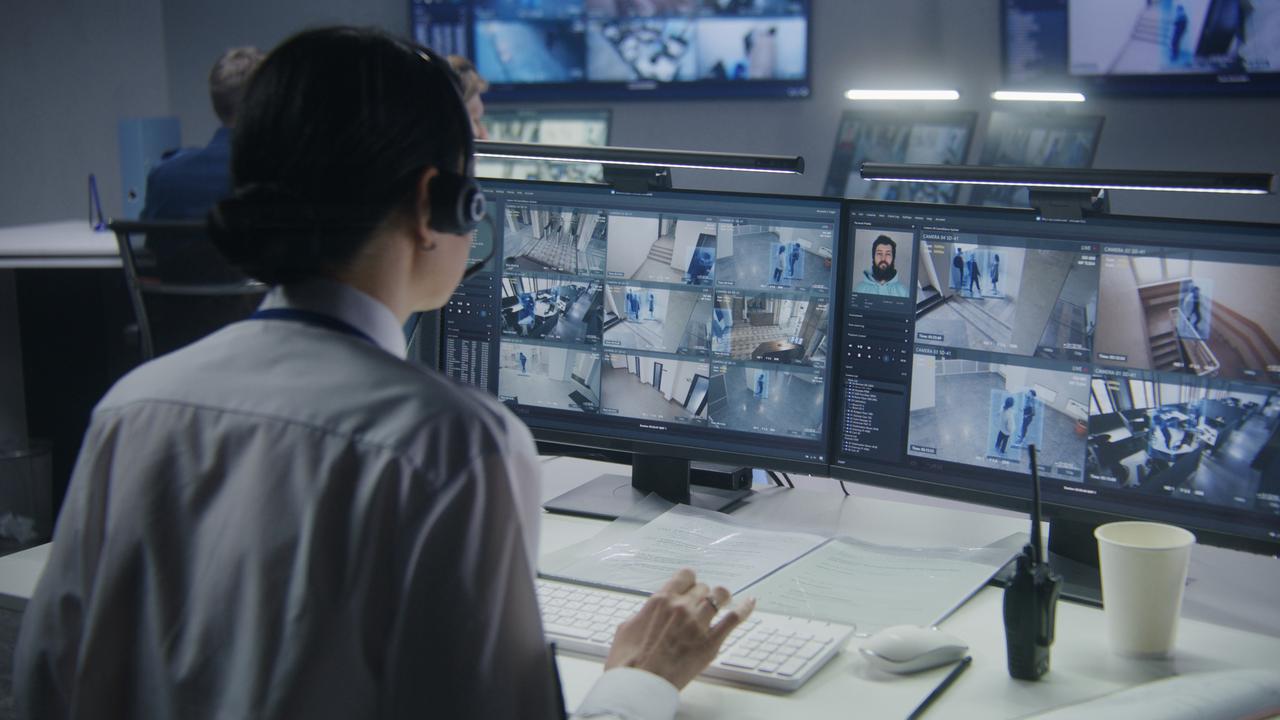Scary reason you’ll never want to work again
You may be very surprised to hear these “invasive” details about your job, however there’s a good chance you’ve already agreed to it.
ANALYSIS
Some days, you may just get out of the wrong side of the bed.
Exhausted, grumpy, it takes all your energy to flash the boss a warm smile in the office lift.
It won’t work.
That’s because everything from the security camera in the coffee lounge, to the conferencing camera on your desktop PC, and perhaps even those in your phone, all capture your frown – even upside down.
Your voice tone will be measured, your facial expressions analysed. The words you choose to say – and type – will be transcribed and assessed.
And a handy report then delivered straight to your supervisor’s in-tray.
It sounds too invasive to be true, but it is.
About half of the major corporations in the US report using such employee emotion monitoring tools, especially if you’re working in customer service, nursing, caregiving or call centre roles.
But no such information is available for Australia.
Australia has no federal legislation specifically addressing workplace monitoring. It’s a matter for the states.
And what passes for reasonable surveillance often comes down to a complex interpretation of privacy laws and individual workplace agreements.
In NSW, for example, covert surveillance to monitor work performance is prohibited.
But what constitutes covert?
Generally, employees are required to give their consent, “express or implied”. And therein lies the catch.
After all, weren’t you given access to the company’s policies, enterprise agreements and terms and conditions upon the offer of employment?
And if you didn’t like what you saw amid the hundreds of pages of legalese, you shouldn’t have taken the job.

Big Brother, meet “bossware”
In February last year, Suzie Cheiko claimed she had been “let go” by Insurance Australia Group after 18 years for failing to meet her quota of computer keystrokes.
The Fair Work Commission rejected her unfair dismissal claim after assessing a broader variety of performance criteria.
About the same time, in Canada, a woman was ordered to repay her former employer $4142 after surveillance software on her laptop insisted she had wrongfully claimed 50 “billable hours”.
Her employer says she was sacked for time theft. She said she didn’t only work on the laptop. But a tribunal ruled that the tracking software offered sufficient evidence of wrongdoing.
Another case in the US reveals just how much information is at stake.

Indianapolis retailer Lisa Rene used her workplace PC, as permitted, to check personal email and bank details.
A supervisor with access privileges was found to have extracted her logins from key logger data (which records every keystroke and mouse movement you make) to access both illegally.
Then there’s the time US Walmart employees were instructed to install an app on their personal phones. It was supposed to be a quick and easy way to update stock inventories.
But it provided company supervisors on-call access to a phone’s cameras and tracking services – even after hours.
And we know at least one Woolworths store in Wetherill Park, NSW, installed 500 tiny cameras to monitor its customers and staff last year.
When paired with pattern recognition algorithms, these can identify who’s shoplifting, who’s not wearing safety gear, and who’s not where they’re supposed to be, when they’re supposed to be.
That’s over and above monitoring how many boxes you’ve shifted, price tags you’ve changed, widgets you’ve tweaked, etc, in a given time period.
Think such surveillance doesn’t apply to you? Even if you work in a little old office in outer suburban Australia? Or your back room?
Think again.

Signs of the times
Ever notice your laptop’s camera’s activity light flash on – just for an instant?
Does the phone you use for work freeze, even momentarily?
Will your PC’s fan power up unexpectedly, even when you’re doing nothing to stress the machine?
Does the download speed of any of your devices suddenly seem to change?
They’re just tiny signs.
And they could be symptoms of almost any form of digital ailment.
But they generally mean something’s going on in the background.
Is it a work device? Does it run work software? Even just a work-supplied app?
Teramind. Veriato Cerebral. Hubstaff. StaffCop Enterprise. Spyzie. CleverControl. VNC. LogMeIn. Shadow. Silent Watch. GoToMyPC.
These are just some of the more than 500 digital surveillance tools employers can exploit.
They can capture regular screenshots and record your every keystroke and mouse movement. They can activate your microphone and webcam, and access your chats, emails and documents.
Watch out for them and their like in your mobile’s app list or system tray, as well as Task Manager (Windows) or Activity Monitor (Mac), and remember not all surveillance tools have suspicious names.
Do you know that Microsoft Office 365 and Google Workspace record every activity and interaction, sort it, encapsulate it, and report it to your administrator? And if it doesn’t, it allows third-party apps to do so?
Did you know anything accessed through the company’s Wi-Fi can be surveilled? Or that the office laptop and phone funnel all data through a monitored VPN, no matter where you use it?
Even a store’s barcode scanner can record when it’s used, where it’s used, what it’s used on – and by whom. An itemised report gets uploaded each night.
And the carpool car’s GPS knows where it’s gone, the route you took, the speed you drove – and if there were any unexpected bumps along the way. The carpool manager knows, too.
What’s different now is the way all this data is being aggregated.
It’s being compared with other employees. AI assesses this against corporate performance benchmarks and reports your score.
Any breaches of company policy will be flagged.

Office creep
It started with a keycard. Where will it end?
A 2022 Microsoft report found 90 per cent of Australian employers didn’t trust their workers.
At the same time, Gartner Research found the number of businesses using staff surveillance software had soared to 60 per cent over the course of the COVID-19 pandemic – and only continued to increase afterwards.
Software is the ideal supervisor.
It never takes a break, it’s never distracted; it never blinks.
It can track what employees are doing, how quickly they’re doing it, and how effective the outcome is.
All can provide data to be harvested to produce a “productivity score” for individual employees.
Periodic assessments can be delivered in tabulated or flow chart form. But managers can also ask for instant notification each time you take a break, make a private phone call or write a private email. Or if you’re hungover, unwell, unhappy or distracted.
“Many workers, while generally aware they are being monitored, don’t know the extent of that surveillance or what is done with the information,” a recent Stanford University report states.
“We’ve learned that it’s possible to ‘Uberize’ or ‘gig-ify’ almost any job: breaking the work down into individual tasks, atomising the people who perform them, and controlling those workers through systems that track their every movement.”
But only if it’s related to workplace compliance or safety.
“It may be reasonable for an employer to monitor some activities to ensure staff are doing their work and using resources appropriately,” concludes the Office of the Australian Information Commissioner.
“If your employer monitors staff use of email, internet and other computer resources, and they’ve told you about the monitoring, this would generally be allowed.
“If an employer keeps a record of their monitoring, then the Australian Privacy Principles may apply. For example, a CCTV video recording or a computer record of emails that doesn’t directly relate to your employment.”
Jamie Seidel is a freelance writer | @JamieSeidel






